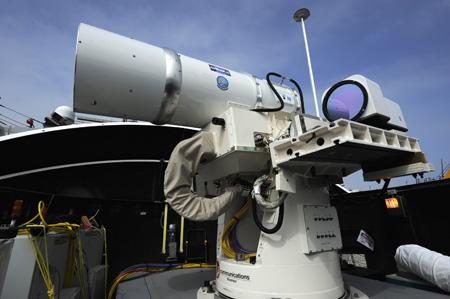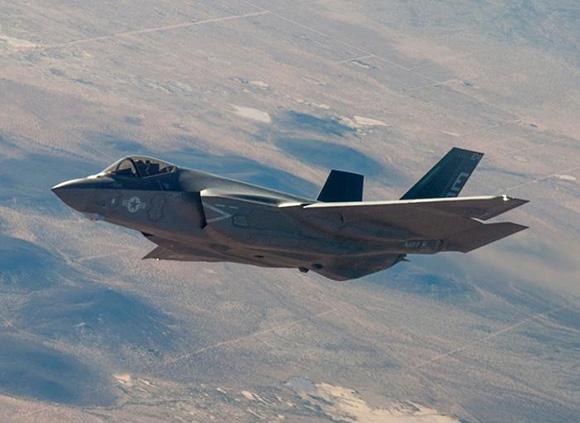The F-35 could be equipped with a modular fiber laser. Lockheed Martin would have opted for this solution, compared to lasers based on crystal components or unstable chemical systems. The fiber optic laser, compared to a prism that works in reverse, will make the system more flexible and efficient. In the Lockheed Martin specifications, also the possibility of adjusting the laser power, adding modules.
The first laser from 60 kilowatt will be ready for testing next year. The weapon system can be increased in power up to a maximum of 120 kW. Obviously, we are talking about additional equipment, which can be adopted by every single country and which is outside the normal integration of the systems. It is a possibility to increase the capabilities of the F-35.
We know that without deep hardware upgrades to avionics, radars, weapons and propulsion, the F-35 (designed in the years' 90) may not be able to deal with Russian and Chinese threats. Foreign advances in fifth-generation technology are obvious and constant, which is why these updates are necessary. It would be appropriate to call them "fundamental".
Among the upgrades planned for the F-35 a new system avionics, more powerful radar, laser weapons and a new engine that can reduce consumption and increase performance (in the 6 block provided for in the 2019 there are improvements to the engine, but if is planning a new one).
What does this mean? That the fighters currently built in 'Low-Rate Initial Production' and delivered, could all be updated, some even before flying. The F-35, an investment of 400 billions of dollars (in addition to 650 billions of dollars provided by the Government Accountability Office in maintenance costs only), risks going into service already obsolete compared to the counterparts that it should face in a hypothetical scenario.
These hardware and software upgrades clash with what was stated by Lockeed Martin and with the advertised superiority of the fighter that would have ensured victory in every fight, even though we now know that this is no longer the case. The JSF is a tactical fighter designed for the war of the future, not a platform for air superiority (although at first there was even talk of "dominion", a word used only for the Raptor).
The reaction of foreign partners to future updates, worth an F-35 series B line, is still warm. Because the point is precisely this: future updates (not to be confused with the development roadmap of Lockheed Martin to achieve full operational capacity) will be borne by the individual nations that can decide whether or not to keep the hunt abreast of global challenges (the examples are wasted on numerous platforms that have not reached their full development due to lack of funds or have become obsolete online). We know that the new engine will cost around 15 million dollars, while for radar and avionics it could even be paid twice as much as initially paid.
All crazy about laser weapons
All branches of the military want laser weapons, but not everyone wants them for the same missions. The USAF is pursuing a dual approach: a laser for the AC-130 gunboat and another for the F-15E Strike Eagle. Neither was designed for the missile defense system, Holy Grail for the Army and the Navy. The Air Force, on the other hand, would like a laser to take down enemy vectors and ultimately land targets. Needless to point out the technical obstacles for the Air Force laser tactical applications.
 Technically it is much easier to adapt a laser weapon on a terrestrial carrier or on a Navy ship. Just think of the first and only operational laser weapon in the world installed on the USS Ponce (picture on the right), ship from 17.000 tons. In contrast, the AC-130J (photo below) weighs only '82 tons at full load. The F-15E just 40. Analyzing the tactical purpose of lasers for the Army, the Marine Corps and the Navy, as theHigh-Energy Laser Mobile Demonstrator, Ground-based Air Defense and Laser Weapon System, one senses that they were designed for defensive purposes. The ultimate goal is a laser with the power and capacity (hence the reach) to break down incoming ballistic and cruise missiles, protect a base, land unit or naval task force.
Technically it is much easier to adapt a laser weapon on a terrestrial carrier or on a Navy ship. Just think of the first and only operational laser weapon in the world installed on the USS Ponce (picture on the right), ship from 17.000 tons. In contrast, the AC-130J (photo below) weighs only '82 tons at full load. The F-15E just 40. Analyzing the tactical purpose of lasers for the Army, the Marine Corps and the Navy, as theHigh-Energy Laser Mobile Demonstrator, Ground-based Air Defense and Laser Weapon System, one senses that they were designed for defensive purposes. The ultimate goal is a laser with the power and capacity (hence the reach) to break down incoming ballistic and cruise missiles, protect a base, land unit or naval task force.
The Air Force laser is more aggressive. The laser option on the AC-130 gunship would mean having a precise weapon that is destructive, much more lethal than conventional systems. Hitting a target with direct energy (in reference to the F-15) in an air-to-air context means to hit it in milliseconds and no longer in minutes. An AIM-120 AMRAAM air-to-air missile flies at around 3.000 miles per hour, even if the actual data is classified. A laser, on the other hand, "moves" at the speed of light, ie 186.000 miles per second. Instead of carrying half a dozen supersonic missiles, an airplane could fire hundreds of laser shots before being refueled by a tanker. In this way, his mission would not be limited to the loading of weapons. Because lasers can fire an infinite number of shots at the speed of light, they are ideal for intercepting high-speed threats.
 The different approach of the Air Force with respect to the Navy and the Army appears evident. Rather than trying to protect a ship, a base or a fleet, the USAF focuses on the self-protection of the single laser-carrying aircraft. The Air Force would like a multi-purpose laser: defensive / offensive weapons that can fire in low-power mode for self-defense, in non-lethal offensive mode (to burn sensors or engines) and, finally, in lethal mode. The Air Force expects to test the first 150 kW airborne lasers within the next five years. The roadmap of theAir Force Research Laboratory provides a three-stage development plan.
The different approach of the Air Force with respect to the Navy and the Army appears evident. Rather than trying to protect a ship, a base or a fleet, the USAF focuses on the self-protection of the single laser-carrying aircraft. The Air Force would like a multi-purpose laser: defensive / offensive weapons that can fire in low-power mode for self-defense, in non-lethal offensive mode (to burn sensors or engines) and, finally, in lethal mode. The Air Force expects to test the first 150 kW airborne lasers within the next five years. The roadmap of theAir Force Research Laboratory provides a three-stage development plan.
The SHIELD defense system, which will have to demonstrate the capability of self-defense of laser weapons, will be tested within the 2020. The first test for a 2022 kilowatt defensive laser system is planned for the 100. Finally, within the 2024, an offensive 300 kilowatt system will be tested, capable of destroying enemy aircraft and long-range land targets.
Should they actually work, the first "pocket" laser weapons could also equip the F-22 or the F-35, but you certainly can't hope to see them integrated into the cell. This means that it is the Raptor the Lightning II will be able, between 10 or 15 years, to carry laser weapons, but at the expense of the stealth of their cell, not designed for having implemented energy systems. However, it is clear that the state of the art of laser weapons will not be reached before the 2040-2050, in theory ready for the future sixth generation fighter, in the design phase.

(photo: Lockheed Martin / DARPA)












